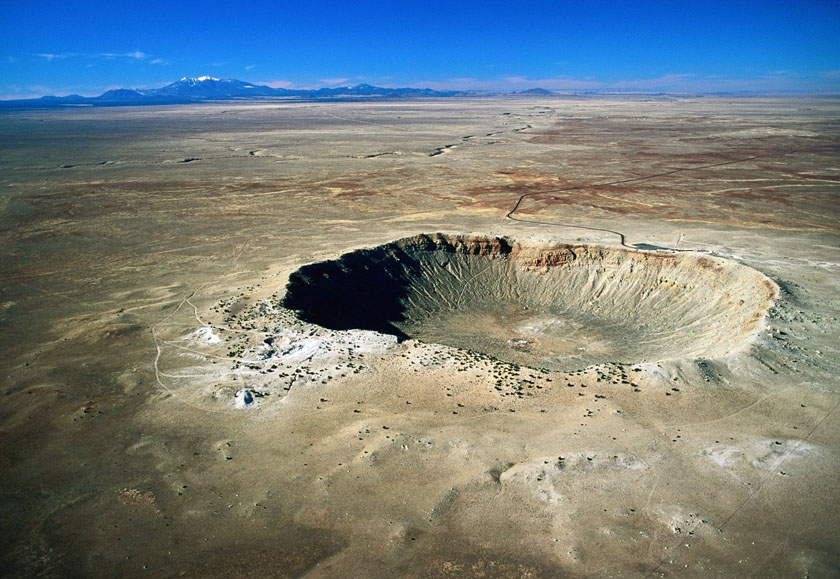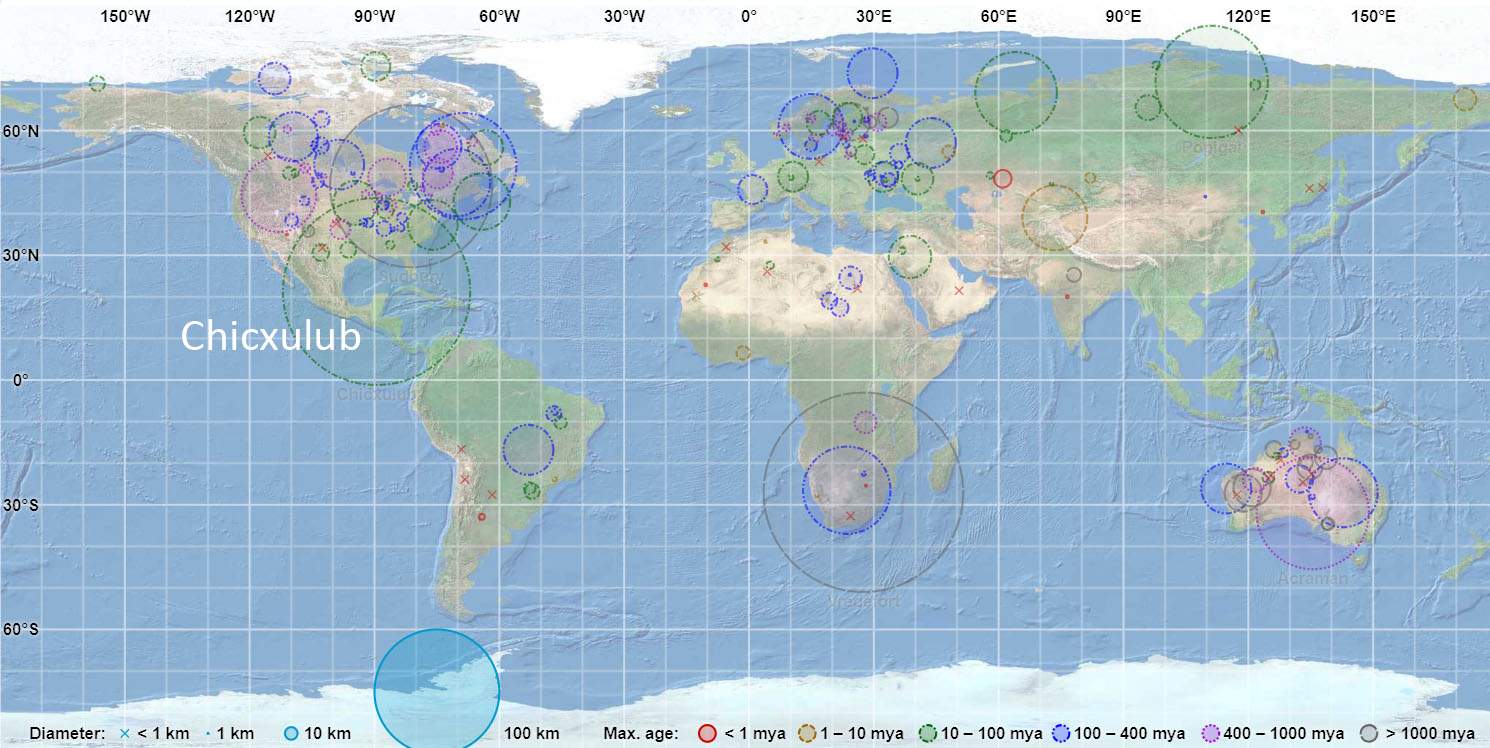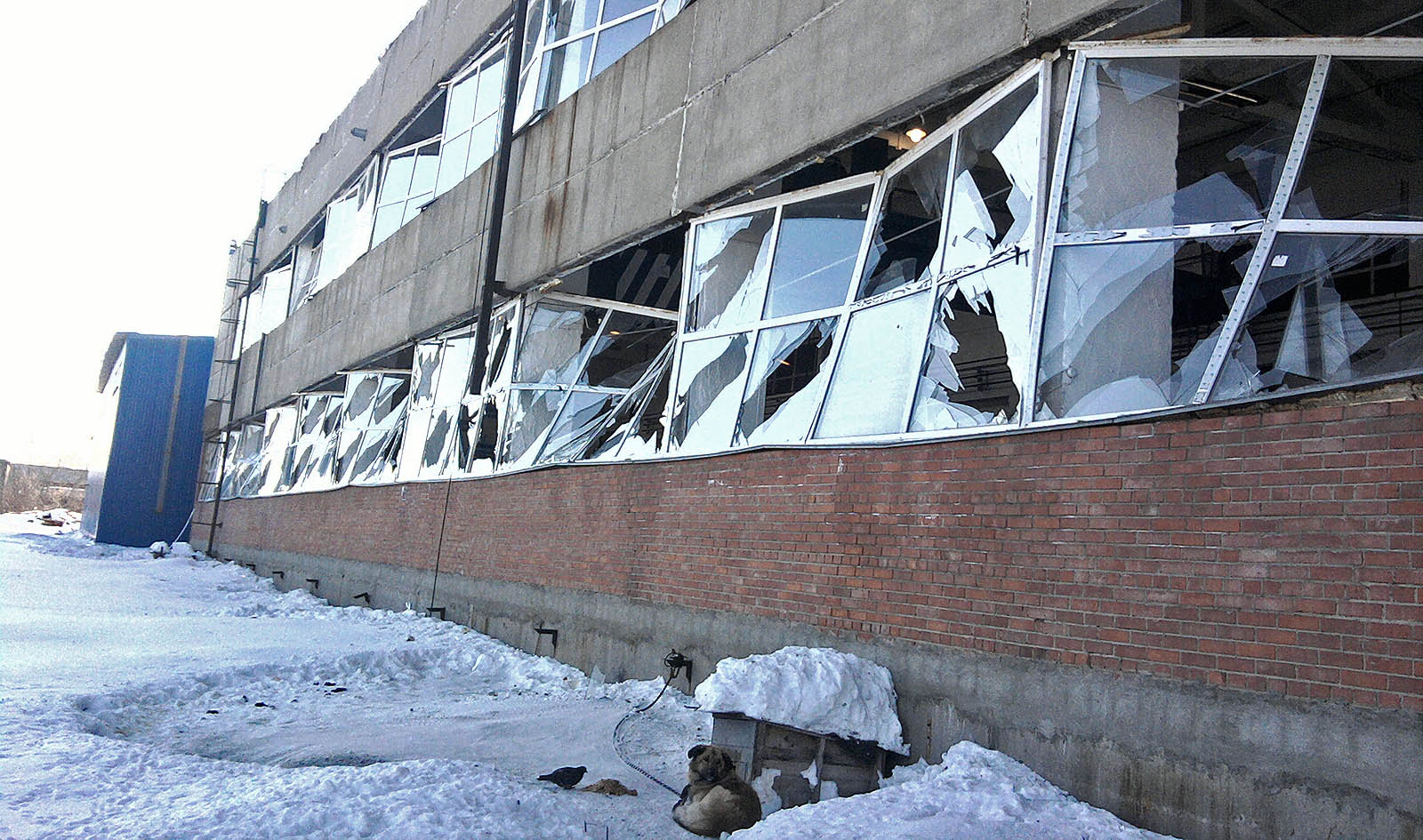NATURE → Cosmic Hazards - Asteroid Impact
Stephen Hawkings in his book Brief Answers to Big Questions (2018) considered that that an asterod collision was the biggest external threat to our planet and indeed to our survival.
Background
Asteroids are irregulary shaped rocky bodies orbiting in space, ranging in size from 1 meter to several hundred meters in diameter. A large number orbit our sun, mainly concentrated in a belt extending between Mars and Jupiter, When asteroids collide, they are thrown out of orbit and may head earthwise. Collision also results in smaller fragments breaking off. These fragments are called meteoroids.
Meteoroids, because of their small size, generally less than 1 meter in diameter, burn up (vapourize) if they enter earth's atmosphere and cause little damage. Meteoroids that are not fully vapourized by our atmosphere hit the earth's surface as meteorites. Large asteroids (greater than 20 meters in diameter) colliding with the earth, however, can have devestating effects. The danger comes not only from their size, but also their speed of approach, approximately 12 to 30 km/sec, which can produce massive shock waves when asteroids enter and break up in out atmosphere. Large asteroids therefore pose two major risks, the impact itself and the shockwaves from atmospheric explosion (airburst).

Asteroid impact!
Source:

Barringer Impact Meteor Crater, Arizona, USA
Source: The Planetary Society: https://www.planetary.org
Past Asteroid Collisions
Asteroids regularly impact every planet in our solar system including our earth. If you look at our Moon you will see hundreds of well preserved impact craters but on earth impact craters are rarely visible because of ongoing land formation, tectonic movement, our oceans and weathering and erosion. They are there however, as asteroid impact with our earth is frquent, but they need to be discovered geologically. Most impacts are of relatively small size and of little significance, but many large extinction level impacts have also occured in the past. Geologically, one of the most significant recognised massive impacts was the Chicxulub Meteor, 66 million years ago, near the Yukatan Peninsula, Mexico, which is believed to have led to a massive worldwide tsunami and the extiction of land based dinosaurs.
More recent asteroid impacts have been mainly airbursts (superbolides) including the Chelyabinsk Meteor (2013)and the Tunguska Event (1908), both in Russia. The shock waves resulting from these impacts caused significant damage. Althoug only of small size (estimated 17 meters in diameter) it is believed that the airburst from the Chelyabinsk meteor (2013) alone was equivalent to 530 kilotons of TNT exploding, roughly the strength of 30 Hiroshima bombs. If this impact had been over a populated area there would have been more significant damage and many deaths.

World map of known Asteroid impacts
Source: Wikipedia

Localised damage from the Chelyabinsk Meteor, Chelyabinsk, Russia 2013
Source: Meteorite Recon